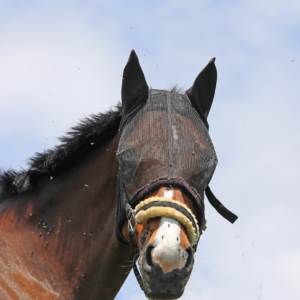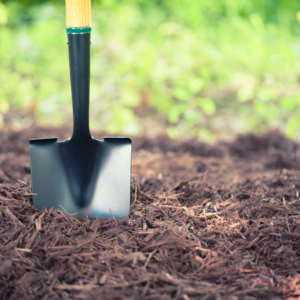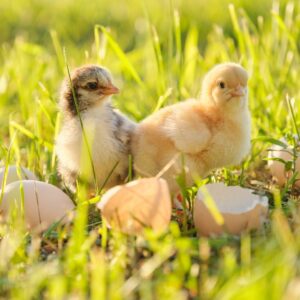 Signs That Your Horse Has An Insect Problem: We’ve all had times where we wish our horses could talk and tell us what’s bothering them. The truth is, horses do communicate as best they can. It’s up to horse owners to pay attention to behaviors and physical signs to interpret what’s wrong. (And don’t forget to visit KVF for your horse supplies!)
Signs That Your Horse Has An Insect Problem: We’ve all had times where we wish our horses could talk and tell us what’s bothering them. The truth is, horses do communicate as best they can. It’s up to horse owners to pay attention to behaviors and physical signs to interpret what’s wrong. (And don’t forget to visit KVF for your horse supplies!)
You know fly season is in full swing when horses are reacting to flying pests. Stomping feet, swishing tails and shaking heads are all normal behavioral responses to flies and insects. Is there a pond or mud puddle available? Horses will often roll or stand in it in an effort to avoid flies.
But some horses also exhibit physical signs that insects are bothering them more than normal.
- Is your horse’s hair falling out in clumps?
- Does his mane have places where he’s rubbed out some or even all of the hair?
- Does he vigorously scratch his tail on fence posts, stall walls or trees?
- Are there places where his skin is irritated or even raw?
These are obvious signs your horse is having trouble with insects that shouldn’t be ignored.
When your horse acts “itchy”
It’s not unusual for a horse to use stationary objects, like a fence post, to scratch an occasional itch. But when a horse walks away from food to scratch or repeatedly rubs his ears, tail, mane, neck or belly to the point that his hair is falling out and his skin is raw–or even bleeding–there is a definite reason.
How can you know if your horse is actually allergic to insect bites, or if he just has irritated skin from being bitten?
“A horse with substantial hair loss or incessant itching likely needs to see a veterinarian who can do some diagnostic testing to nail down a cause,” notes Martha Mallicote, DVM, Dipl. ACVIM, veterinarian and large animal clinical assistant professor at the University of Florida.
“With skin disease, it’s very temping to label it as ‘not that important’ and just treat with over-the-counter ‘remedies.’ But the reality is that some horses with significant allergies need really aggressive therapy to improve their actual quality of life–not just the quality of their hair coat,” adds Mallicote.
She explains that there is not a definitive way to differentiate “itchy” from an actual sensitivity other than allergy testing, which would show any allergens that are affecting the horse. In such cases, your veterinarian’s expertise can get to the root of the problem and help your horse be more comfortable.
“A vet will complete a physical exam, including close inspection of the abnormal skin, and likely choose to take skin samples for culture, cytology or other testing,” says Mallicote.
Signs of insect allergies
Unfortunately, in addition to the aggravation factor, some horses are actually allergic to insect bites. Signs of substantial insect allergies include:
- frequent itching to the point of destruction of fences and stall equipment from the horse’s rubbing
- welts or swelling in the affected area
- hair loss from intense rubbing due to itching
- broken skin, sometimes to the point of bleeding
If your horse has intense itching and hair loss in specific areas, this can indicate an allergic reaction to specific pests known as culicoides.
“The classic distribution of hair loss for a culicoides-sensitive horse is the mane/neck, tail head and ventrum (belly) of the horse,” explains Mallicote.
Culicoides sensitivity
Tiny biting midges, sometimes described as “no-see-ums,” but properly identified as culicoides, can cause extreme distress by biting the horse’s mane, tail and belly, especially if the horse is allergic to the insect saliva. Affected horses will scratch themselves on almost any stationary object in an attempt to relieve the extreme itching.
Culicoides sensitivity may also be referred to as “sweet itch.” In addition to severe itching, it’s common for horses with this condition to have patches of skin with broken or missing hair, scaliness and even oozing lesions. Secondary infections are possible when the skin is broken.
“Culicoides sensitivity is quite common, especially in the Southeastern U.S., but most horses have a more manageable case of the disease,” says Mallicote. “There are certainly those horses that are especially sensitive and do develop those really severe signs that indicate they are so terribly itchy that they cannot stop scratching.”
For those horses, Mallicote says it’s important to minimize exposure to culicoides. These biting midges are most active around dusk, so protecting horses that are sensitive typically means stabling them at this time of day and using fans that create a strong enough air current to keep midges from landing on the horse and biting.
Veterinarians treating such horses may have to prescribe strong anti-inflammatory medication to help get the itch under control.
Be proactive
If your horse has had issues in the past and reacted to insect bites by rubbing his mane and tail until his hair is falling out, you’ll want to take proactive steps before he’s under assault again.
“Get started with fly spray early in the season. Apply an effective product at least once daily and make sure to use enough product to really cover the horse,” advises Mallicote.
Farnam’s Endure Sweat-Resistant Fly Spray for Horses is an effective choice for hard-working horses that will be sweating, while Nature’s Defense Water-Based Fly Repellent Spray is a non-chemical, botanical-based option that also offers great protection.
Read all the directions on the spray bottle to be certain you are applying the correct amount. Use the product as recommended. Many horse owners inadvertently don’t apply enough insect repellent to perform as the product label promotes.
Physical barriers–such as Farnam’s SuperMask II Horse Fly Mask, boots and sheets–may be needed for those horses that are overly sensitive to insects. For pastured horses, spot-on repellent products may also be beneficial.
“As for some situations, long-acting products are also helpful. Not in place of the fly spray but in addition to it,” adds Mallicote. “For sensitive horses, start using fly sheets and fly masks before they are needed to minimize exposure.”
Mallicote reminds owners that these horses will benefit from being stalled with a strong fan. Especially during the time of day when pests are most active.
Keep an eye on your horse’s behavior and watch for physical signs that indicate insect irritation or possible allergy. This way, your horse won’t have to “shout” to get your attention if he’s suffering from pests.
Farnam, Cynthia McFarland





 If you’re a gardening enthusiast, you are probably well-aware of the importance of mulching. Mulching is an essential practice that helps facilitate plant growth and improve the overall health of your garden. In simple terms, mulch is a protective layer applied over the soil to regulate moisture levels, maintain soil temperature, and suppress weed growth. However, not all mulch is created equal. Understanding the different types of mulch and their benefits is crucial to determine what’s best for your garden which we will help break down for you.
If you’re a gardening enthusiast, you are probably well-aware of the importance of mulching. Mulching is an essential practice that helps facilitate plant growth and improve the overall health of your garden. In simple terms, mulch is a protective layer applied over the soil to regulate moisture levels, maintain soil temperature, and suppress weed growth. However, not all mulch is created equal. Understanding the different types of mulch and their benefits is crucial to determine what’s best for your garden which we will help break down for you. Everything you Need to Know about Raising Baby Chicks: Bringing home your baby chicks is an exciting milestone in raising backyard chickens. The three key essentials for raising baby chicks: Warmth, water and feed. Start chicks strong by providing a complete chick starter feed from day 1 through week 18.raising baby chicks
Everything you Need to Know about Raising Baby Chicks: Bringing home your baby chicks is an exciting milestone in raising backyard chickens. The three key essentials for raising baby chicks: Warmth, water and feed. Start chicks strong by providing a complete chick starter feed from day 1 through week 18.raising baby chicks Weed Control for Hay and Pasture Weeds: Here are some helpful tips for weed management in forages are presented in a simple/straight-forward fashion for your convenience.
Weed Control for Hay and Pasture Weeds: Here are some helpful tips for weed management in forages are presented in a simple/straight-forward fashion for your convenience. If you’re looking to grow your own food and enjoy the rewards of a flourishing garden, you’re in the right place. January marks the perfect time of year to start planning and getting everything ready. Whether it’s your first time starting a garden or you’re a seasoned green thumb, there are a few steps you need to take in order to achieve a thriving garden. In this guide, we’ll help you through the essential steps that need to be taken so you can have a successful garden come spring.
If you’re looking to grow your own food and enjoy the rewards of a flourishing garden, you’re in the right place. January marks the perfect time of year to start planning and getting everything ready. Whether it’s your first time starting a garden or you’re a seasoned green thumb, there are a few steps you need to take in order to achieve a thriving garden. In this guide, we’ll help you through the essential steps that need to be taken so you can have a successful garden come spring.